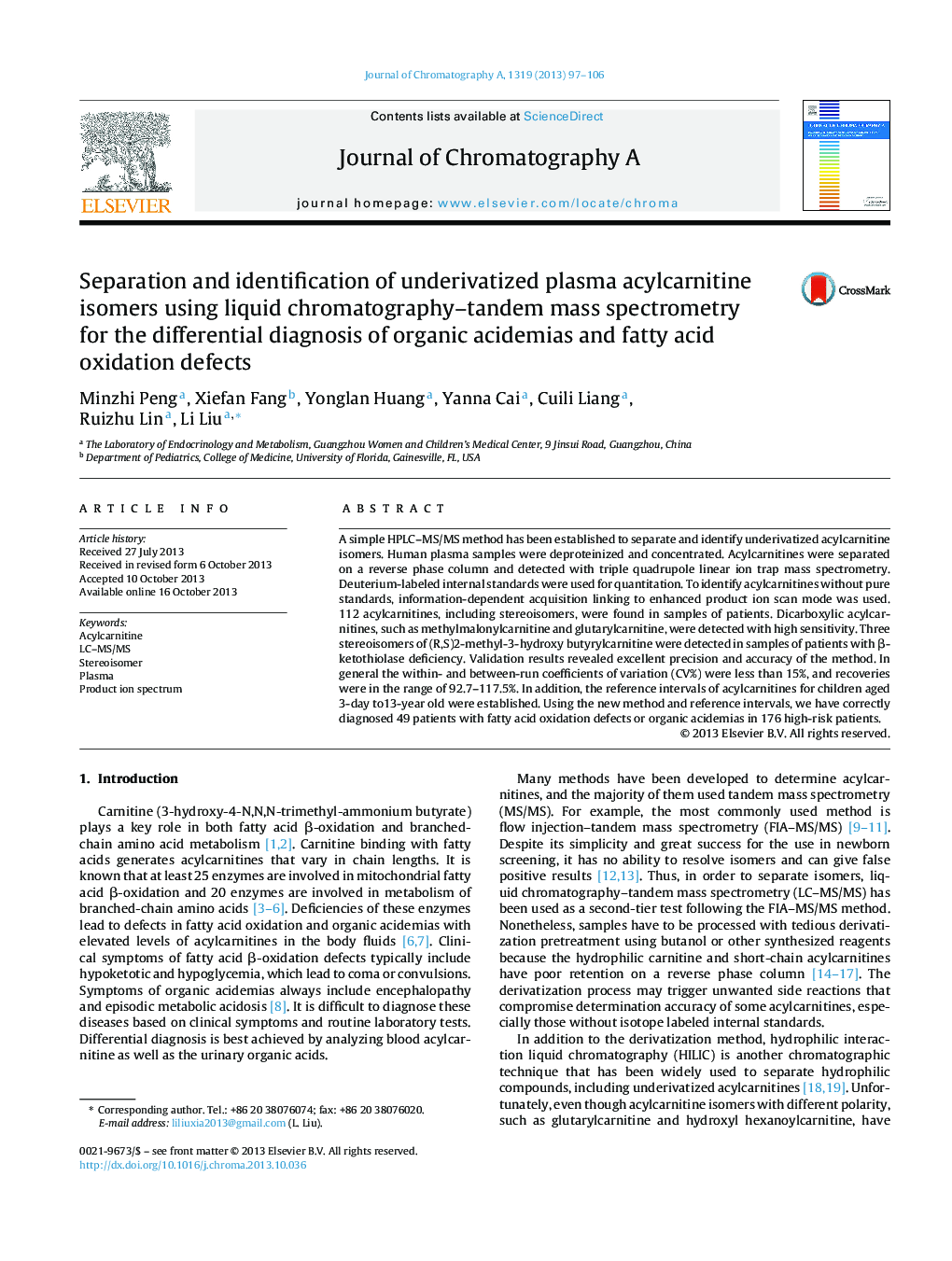| Article ID | Journal | Published Year | Pages | File Type |
|---|---|---|---|---|
| 1200743 | Journal of Chromatography A | 2013 | 10 Pages |
•We developed a HPLC–MS/MS method to separate and identify acylcarnitine isomers.•Acylcarnitines were detected without derivatization.•Stereoisomers were separated on a reverse phase column.•112 acylcarnitine isomers were found in patient samples.•The method is valuable in differential diagnosis of inherited metabolic disorders.
A simple HPLC–MS/MS method has been established to separate and identify underivatized acylcarnitine isomers. Human plasma samples were deproteinized and concentrated. Acylcarnitines were separated on a reverse phase column and detected with triple quadrupole linear ion trap mass spectrometry. Deuterium-labeled internal standards were used for quantitation. To identify acylcarnitines without pure standards, information-dependent acquisition linking to enhanced product ion scan mode was used. 112 acylcarnitines, including stereoisomers, were found in samples of patients. Dicarboxylic acylcarnitines, such as methylmalonylcarnitine and glutarylcarnitine, were detected with high sensitivity. Three stereoisomers of (R,S)2-methyl-3-hydroxy butyrylcarnitine were detected in samples of patients with β-ketothiolase deficiency. Validation results revealed excellent precision and accuracy of the method. In general the within- and between-run coefficients of variation (CV%) were less than 15%, and recoveries were in the range of 92.7–117.5%. In addition, the reference intervals of acylcarnitines for children aged 3-day to13-year old were established. Using the new method and reference intervals, we have correctly diagnosed 49 patients with fatty acid oxidation defects or organic acidemias in 176 high-risk patients.
